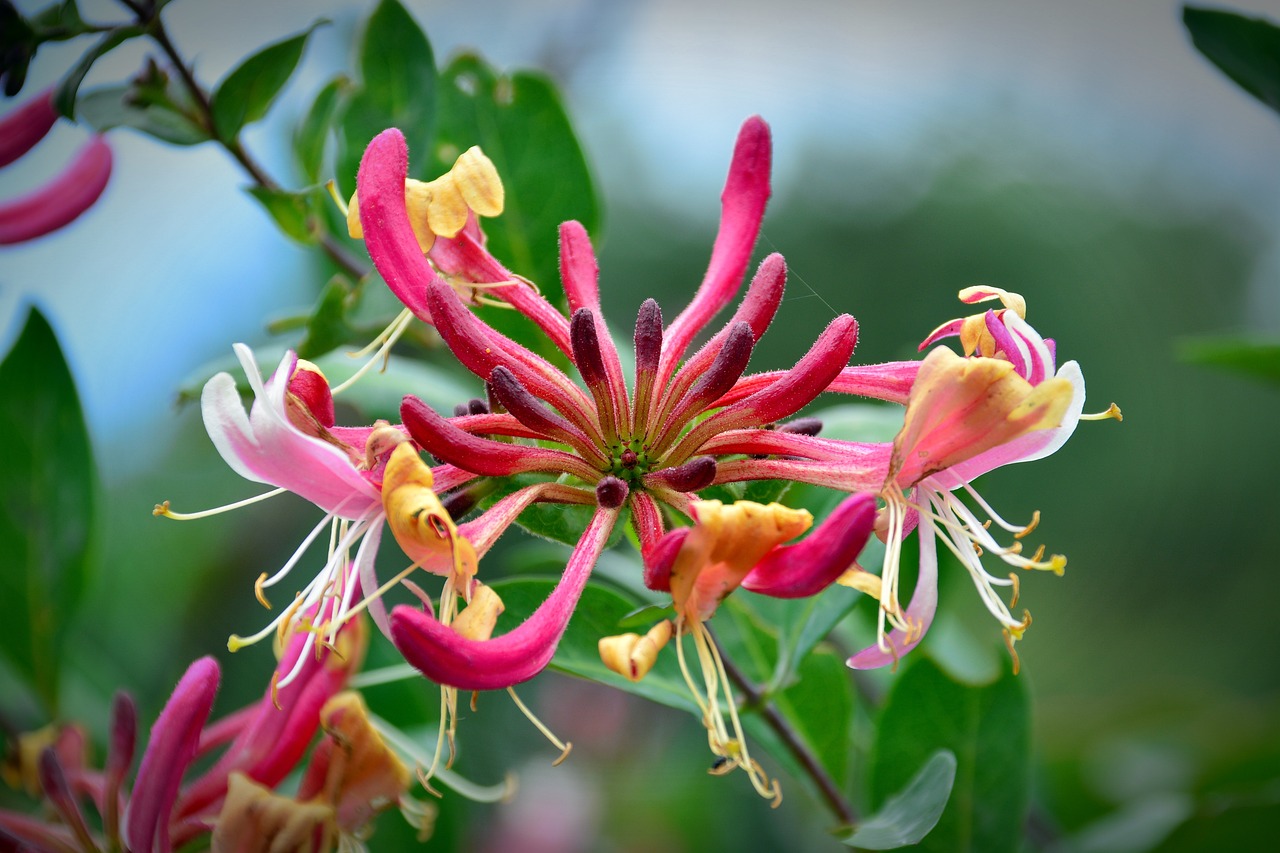This guide will provide you with everything you need to know about finding, harvesting, and enjoying honeysuckle.
Understanding Honeysuckle
Honeysuckle (genus Lonicera) encompasses a variety of species, many of which are known for their climbing vines and beautiful flowers that come in shades of yellow, pink, and white. These plants are often found in fields, gardens, and woodland areas. Beyond their visual appeal, honeysuckle flowers attract hummingbirds and bees, making them a vital part of the ecosystem.
Edibility and Uses
The flowers of honeysuckle are not only visually stunning but also edible. The nectar within the tubular flowers is exceedingly sweet, making it a favorite for those looking to add a touch of nature’s sweetness to their culinary creations. Both the flowers and the berries produced by some species of honeysuckles are used in various ways:
Nectar: The most enjoyable way to consume honeysuckle is to suck the nectar directly from the flowers. Simply pinch the base of the flower and gently pull it out; the sweet nectar will be waiting for you.
Infusions: Honeysuckle flowers can be infused in hot water to create a lovely herbal tea with delightful floral notes.
Syrups and Jams: The collected nectar can be used as a natural sweetener or can be transformed into syrups and jams for a unique twist.
Finding Honeysuckle
Honeysuckle can often be found growing wild in various environments. When searching for honeysuckle, keep an eye out for:
Locations: Look near fences, trellises, or woodlands where vines can climb. They thrive in sunny locations but can also tolerate partial shade.
Season: Honeysuckle typically blooms from late spring to early summer. The flowers are at their sweetest just before they fully open, so early morning is generally the best time to harvest.
Species: While many honeysuckle varieties are edible, several are not. The best-known edible varieties include Japanese honeysuckle (Lonicera japonica) and trumpet honeysuckle (Lonicera sempervirens). Be cautious and confirm the specific species before consuming.
Harvesting Techniques
When you’re ready to harvest honeysuckle, keep these tips in mind:
Gather the Right Tools: You won’t need much—just your hands and perhaps a small container to hold the collected flowers.
Choose Wisely: Select healthy-looking blooms that are vibrant and full of color. Avoid wilted or browning flowers.
Harvest Responsibly: Be mindful of the plant’s habitat. Only take what you need, and avoid over-harvesting any one area to ensure the plant continues to thrive.
Timing: Harvest early in the day when the flowers are filled with nectar. This is when they are freshest and sweetest.
Preparing Honeysuckle for Enjoyment
Once you have gathered your honeysuckle, it’s time to prepare it for enjoyment:
Cleaning: Rinse the flowers gently under cool water to remove any dirt or insects.
Infusing for Tea: Steep the blossoms in hot water for 10-15 minutes. Strain out the flowers and enjoy your sweet herbal tea. You can enhance the flavor by adding lemon or mint.
Creating Syrups: Combine equal parts honeysuckle nectar and water in a saucepan. Bring to a simmer and stir until the nectar dissolves. Cool and store in the fridge for delicious drinks or drizzling over pancakes.
Health Benefits
Honeysuckle is not only a tasty treat but also offers potential health benefits. Traditionally, honeysuckle has been used in herbal medicine to:
Boost the immune system
Soothe respiratory issues
Act as an anti-inflammatory agent
As always, before using honeysuckle for medicinal purposes, consult with a healthcare professional.
Conclusion
Harvesting honeysuckle can be a fulfilling activity that connects you with nature and rewards you with delightful flavors. Whether you’re adding them to your culinary repertoire or enjoying a soothing cup of honeysuckle tea, these sweet blooms are a treat worth seeking out. Remember to be mindful in your gathering, appreciate the beauty of the plant, and savor the sweetness that nature provides.






